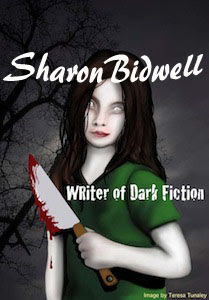Let me stress I mean no insult when I use the term amateur. Every new
writer is a nonprofessional. Some have an advantage of a journalistic
or similar writing background but they, like everyone, learned their
craft. Stories follow certain patterns and by studying these layouts one
learns how to produce effective narratives; even if wishing to alter
these standards to create something new, it is a good idea to recognise
plot. Understand the ‘rules’ to break them.
I’m not going to catalog all the errors editors pick out in many
draft manuscripts, but I will list one of which almost every wannabe is
responsible. Even the successful author can be guilty although often the
story-teller will catch this error in self-edits. If the writer
doesn’t, a good editor will.
Many new writers begin their stories with long-winded paragraphs of
exposition and description. Trained authors do this, but with good
purpose. In those instances, the writers in question set the first
chapter aside to use for their own information, extrapolating the
necessary particulars into the narrative of the book, breaking up the
details and ‘peppering’ the facts between the pages.
I once read an excellent piece of advice: Write your story and begin
at the second chapter. Many writers, but particular ‘new’, will describe
their characters from their height, hair, eye, and skin colour, to the
checked pattern on their garments. This over description doesn’t end at
the character but extends to the environment. These details may be
important, but are best passed on as an ‘impression’. Study a book
bearing this in mind. Examine how the author presents the main
character. Is he or she described as being six feet tall, with brown
eyes, and long brown hair swept over his or her shoulders? Of does the
author describe this person through someone else’s impression of them?
EG:
“His eyes were the same deep brown as the colour of his hair. Such
eyes should have made her feel welcome. The way his full lips twitched
suggested his gaze would be twinkling with amusement. Alas, when she
risked straining her neck to look up to his face, his expression
appeared taut, his lips tight, his gaze narrow.”
Fine, not the greatest paragraph. I haven’t put much effort into it,
but the piece is more entertaining than a list of characteristics. As an
alternative to saying he’s tall, she’s having to gaze up to such a
degree she may strain her neck. The section indicates brown eyes and
hair, but instead of stating the man is unhappy, the reader notes his
expression may be hostile, is at least far from welcoming. Is he
displeased about something, or with her? Right away, questions will
likely keep people reading to discover the answers.
Likewise, it is never a good idea to include an information dump
whether at the beginning or later in the book. On rare occasions, this
is necessary. A rather tedious chapter exists in James Herbert’s The Fog.
However, the data is necessary and is presented to the reader as a
meeting. Do not begin by introducing a character, describing the room he
or she occupies, and listing the background of how, when, where, and
why the person came to be there, who their relatives are and what they
are all thinking of having for lunch. Too much explanation slows
narrative, can be boring, and also requires the reader to take in a
great deal of information too fast. An editor will grow weary even
faster. The manuscript will go straight to the slush pile.

No comments:
Post a Comment